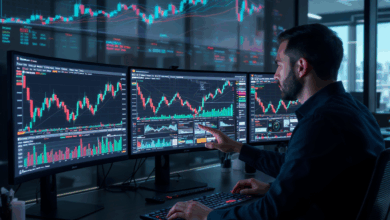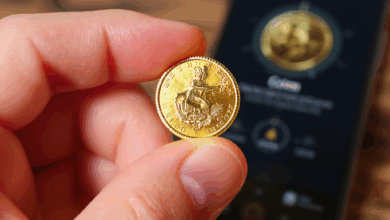Master Hedging Against Gold Price Volatility – Practical Steps You Can Take Today

Why does gold, often hailed as a fortress against economic uncertainty, sometimes feel like a rollercoaster ride for investors? I remember the first time I watched gold prices tumble sharply right after hearing news that should have bolstered them—an unsettling contradiction that left me questioning how to actually manage the risks involved. If you’ve found yourself wondering how to shield your assets from such unpredictability, you’re not alone.
Gold has a storied reputation as a hedge against inflation and market turmoil, yet its value is far from static. Influenced by geopolitical tensions, currency fluctuations, and shifting economic policies, its price can surprise even the most vigilant investors. This tension between gold’s safe-haven status and its underlying volatility sets the stage for a critical question: how can we effectively hedge against gold price volatility without feeling overwhelmed?
In the coming sections, we’ll explore practical, step-by-step methods that demystify this challenge. From diversifying your portfolio to leveraging modern financial tools like ETFs and futures, these strategies are designed with accessibility in mind—so whether you’re a seasoned professional or just beginning to consider gold in your investment mix, you’ll find actionable insights here.
Recent trends reveal a surge of interest in gold among younger investors, especially millennials and Gen Z, who are drawn by inflation fears and economic uncertainties. This shift highlights the importance of up-to-date, practical approaches to managing gold investments. By understanding how to navigate these dynamics, we can better position ourselves to safeguard wealth and even capitalize on market movements.
So, if you’ve ever hesitated to add gold to your portfolio for fear of its price swings, or felt unsure about the tools available to manage those swings, this guide is crafted for you. Together, let’s unravel these complexities and build a confident approach to hedging against gold price volatility—because managing risk shouldn’t be reserved for experts alone. Ready to dive in?
When I first dipped my toes into the world of gold investing, I was struck by a puzzling reality: gold, often revered as the ultimate safe haven during economic storms, could feel almost capricious. One moment it seemed like an unshakeable fortress, the next a wild rollercoaster. What was behind this paradox? How could something so trusted be so unpredictable? This tension sparked a deeper curiosity about how investors—myself included—could actually shield themselves from the whims of gold price swings.
Why Does Gold Fluctuate Despite Its Safe-Haven Status?
Gold’s allure largely stems from its historical role as a hedge against inflation and uncertainty. But, as I’ve learned, its price dances to the rhythm of several intertwined forces. Geopolitical tensions, shifting economic policies, movements in currency markets—all these ripple through gold’s value. For example, when central banks adjust interest rates, it can either buoy or depress gold prices, depending on broader market sentiment.
Interestingly, recent research highlights a surge of interest in gold among younger generations—millennials and Gen Z—who are increasingly wary of inflation and economic instability. Nearly half of these groups own gold or express intent to do so, indicating a fresh wave of investors seeking stability amid uncertainty. This demographic shift underscores the urgency of understanding practical methods to manage gold’s volatility today (Reuters, 2024).
Building a Diversified Portfolio Spreading the Risk
One of the most accessible ways to hedge against gold price volatility is through diversification. It sounds simple, but its effectiveness lies in thoughtful asset allocation. Combining gold with stocks, bonds, real estate, or even cryptocurrencies can help cushion your portfolio from sharp swings in any single asset class. This strategy isn’t about eliminating risk—because risk is part of investing—but about managing it so one shock doesn’t topple everything.
In 2025, investors have been increasingly adopting diversification strategies precisely to counteract economic uncertainties and the unpredictable nature of gold prices (Financial Times, 2025). Wouldn’t you agree that a well-rounded portfolio feels more like a safety net than a tightrope?
Leveraging Financial Instruments Futures, Options, and ETFs
For those ready to step beyond traditional ownership, financial instruments offer powerful tools to hedge. Futures and options contracts let investors lock in prices or benefit from price movements without owning physical gold. While these can sound intimidating, many platforms now provide user-friendly access to these markets.
Moreover, Exchange-Traded Funds (ETFs) and Exchange-Traded Commodities (ETCs) have democratized gold investment. They combine the liquidity of stocks with exposure to gold prices, eliminating the hassles of storage and security. For example, digital gold investment platforms have surged in popularity, especially among younger investors seeking convenience and lower transaction costs (Royal Mint, 2025).
I recall a conversation with a friend who was initially hesitant about gold ETFs. After exploring how these products work, she found them surprisingly accessible and efficient for managing risk.
Staying Informed Economic Indicators as a Compass
Another layer to managing gold’s volatility is vigilance. Keeping an eye on inflation rates, interest rate changes, and geopolitical developments can inform timely decisions. For instance, a sudden escalation in geopolitical tension might signal a rise in gold prices, suggesting a moment to adjust holdings.
Yet, this raises a question: how do we balance staying informed without becoming overwhelmed by market noise? It’s a delicate dance—one that requires filtering signals from static and trusting a well-thought-out strategy over knee-jerk reactions (GoldFundz, 2025).
Practical Steps to Start Hedging Your Gold Investment Today
-
Assess Your Current Portfolio: Understand how much exposure you already have to gold and other asset classes.
-
Explore Diversification Options: Consider adding stocks, bonds, or real estate holdings to balance risk.
-
Investigate Financial Instruments: Look into gold ETFs or digital platforms that allow fractional gold ownership.
-
Learn About Futures and Options: If comfortable, experiment with a small position in these contracts through trusted brokers.
-
Monitor Key Indicators: Subscribe to economic news that tracks inflation, interest rates, and geopolitical events.
-
Consider Gold Bonds: Instruments like Sovereign Gold Bonds offer returns linked to gold prices with additional benefits such as interest payments (Cambridge Wealth, 2025).
What Are We Still Missing?
Even after laying out these strategies, I find myself pondering the unpredictable human elements—market psychology, sudden policy shifts, or black swan events. Can any hedge truly be foolproof? Perhaps the real art lies not just in the instruments we use, but in cultivating patience, discipline, and openness to adapting as markets evolve.
So, as we stand on this precipice of understanding, I invite you to consider: how do you personally weigh the comfort of gold’s historical solidity against the reality of its price swings? And how might embracing both its strengths and vulnerabilities change the way you invest?
This is not the end of the conversation, but a doorway into deeper exploration. Let’s continue this journey together—navigating the shimmering yet shifting landscape of gold investment with curiosity and care.

Reflecting on the intricate dance between gold’s revered status as a safe haven and its undeniable price volatility, we’ve uncovered that managing risk is less about seeking certainty and more about embracing calculated strategies. Diversification emerges not just as a portfolio tactic but as a mindset—a way to spread our bets across different terrains so no single tremor topples our entire investment landscape. Meanwhile, financial instruments like ETFs and futures offer bridges between traditional ownership and agile market navigation, tools that democratize access yet demand respect and understanding.
Beyond strategies, staying attuned to economic signals reminds us that investing is a living dialogue with a world in flux; it asks us to listen carefully but not to be swayed by every passing whisper.
What this journey truly imparts is a layered insight: hedging against gold price volatility is as much about cultivating patience and adaptability as it is about deploying the right instruments. This perspective invites us to rethink risk—not as a foe to be vanquished but as an inherent rhythm of the markets that can be danced with.
If you’ve found resonance here, consider taking a practical step today—whether it’s reviewing your current portfolio’s exposure to gold, exploring a gold ETF that fits your comfort level, or simply subscribing to a trusted economic news source to sharpen your market awareness. These actions, small yet deliberate, plant seeds of confidence and control.
Looking ahead, as younger generations increasingly embrace gold investment amid economic uncertainty, the landscape will continue evolving with new tools and insights. Our role is to remain curious and proactive, shaping our strategies alongside these changes.
So, as we part for now, I leave you with this thought: How might your relationship with gold—and risk itself—transform if you viewed volatility not as a threat but as a signal to engage more deeply, learn more patiently, and invest more wisely? Let’s keep this conversation alive, embracing the shimmering complexity of gold investment together.





